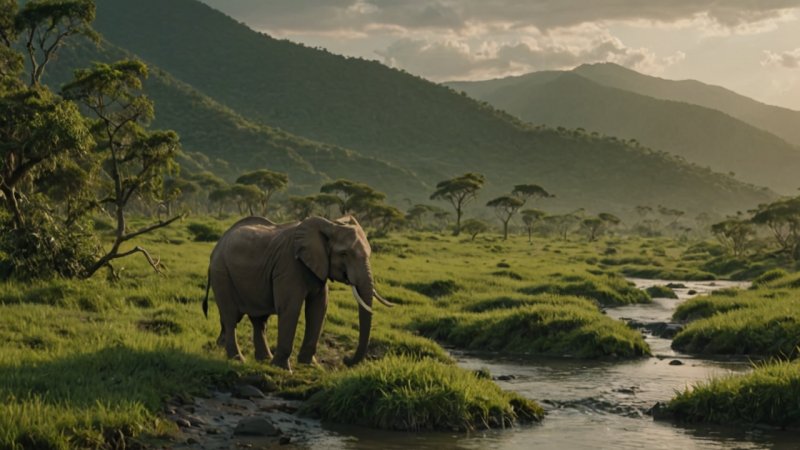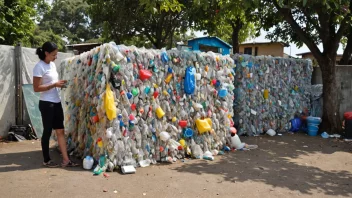In an era where environmental issues have reached a critical juncture, the power of storytelling through films and documentaries has emerged as a pivotal tool for raising awareness and inspiring action. These visual narratives not only captivate audiences but also serve as powerful instruments for education and advocacy, shedding light on pressing environmental challenges and the urgent need for sustainable practices. By presenting complex scientific information in an accessible format, environmental films can engage diverse audiences and spark meaningful conversations about conservation and climate change. In this article, we will explore the profound impact of environmental films and documentaries on public awareness, delve into notable examples, and discuss how individuals can harness this medium to drive change in their communities.
The Impact of Visual Storytelling on Environmental Awareness
Visual storytelling has an unparalleled ability to evoke emotions and foster connections. Environmental films leverage this power by combining compelling narratives with stunning visuals of nature, wildlife, and the stark realities of environmental degradation. By immersing viewers in these stories, filmmakers can create a sense of urgency and empathy that often transcends traditional educational methods. Research indicates that individuals are more likely to retain information presented in a narrative format, making films an effective tool for communicating complex environmental issues such as climate change, deforestation, and pollution.
Engaging Diverse Audiences
One of the remarkable aspects of environmental films is their capacity to reach a broad audience. Whether through a documentary screened in a community center, a film festival, or a streaming platform, these films can engage individuals from various backgrounds and age groups. The accessibility of visual media allows for the dissemination of crucial information to those who may not typically engage with environmental science or activism. This inclusivity is essential for fostering a collective response to environmental challenges, as it encourages individuals from all walks of life to recognize their role in protecting the planet.
Notable Environmental Films and Their Contributions
Several documentaries have made significant impacts on public awareness and policy regarding environmental issues. For instance, “An Inconvenient Truth”, featuring former Vice President Al Gore, played a crucial role in bringing climate change to the forefront of public discourse. Released in 2006, it effectively communicated the urgency of the climate crisis through compelling visuals and data, ultimately influencing public opinion and policy debates worldwide.
Another noteworthy film, “Our Planet”, narrated by Sir David Attenborough, showcases the beauty of our natural world while highlighting the threats posed by human activity. This series not only captivates viewers with breathtaking cinematography but also emphasizes the interconnectedness of ecosystems and the importance of conservation efforts. By portraying the impact of climate change on wildlife and habitats, it inspires audiences to take action in their own lives.
The Role of Independent Filmmakers
Independent filmmakers have also played a vital role in raising awareness about environmental issues. Films like “Chasing Ice”, which documents the efforts of photographer James Balog to capture the melting glaciers, provide a stark visual representation of climate change's impact. These independent projects often bring attention to local environmental issues that may not receive mainstream coverage, giving voice to grassroots movements and community stories.
How Individuals Can Get Involved
As viewers, individuals can harness the power of environmental films to inspire action in their communities. Here are several ways to get involved:
- Host Screenings: Organize community screenings of impactful environmental films. This can spark discussions and motivate attendees to engage with local environmental initiatives.
- Participate in Film Festivals: Attend or volunteer for environmental film festivals, which often feature a variety of films focused on sustainability and conservation. These events can be great networking opportunities for activists and filmmakers.
- Share on Social Media: Utilize social media platforms to share and promote environmental films. Engaging with online communities can amplify the reach of these important messages.
- Create Content: Consider creating your own short films or documentaries that highlight local environmental issues. Sharing personal stories can resonate deeply with audiences and foster a sense of community.
Advocacy Through Film
Films can also serve as a springboard for advocacy efforts. Following a screening, viewers can be encouraged to participate in local campaigns, write to policymakers, or volunteer with environmental organizations. By linking the emotional impact of visual storytelling to actionable steps, filmmakers and activists can create a powerful synergy that drives change.
Conclusion: The Future of Environmental Filmmaking
The role of environmental films and documentaries in raising awareness cannot be overstated. As the world grapples with escalating environmental crises, the need for compelling narratives that resonate with audiences is more critical than ever. Through the lens of film, complex issues are transformed into relatable stories that motivate individuals to take action. By engaging with these narratives, supporting filmmakers, and participating in community initiatives, we can all contribute to a more sustainable future. As the power of visual storytelling continues to grow, so too does the potential for collective action and positive change in the face of environmental challenges.






